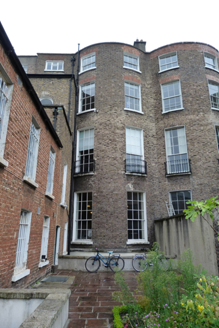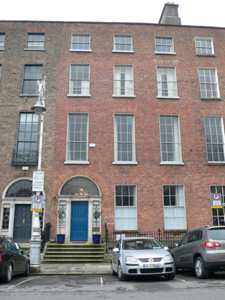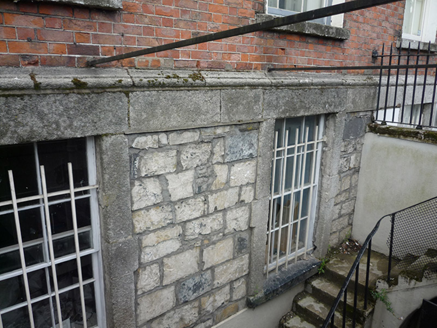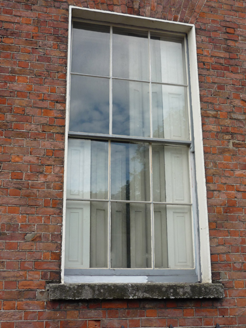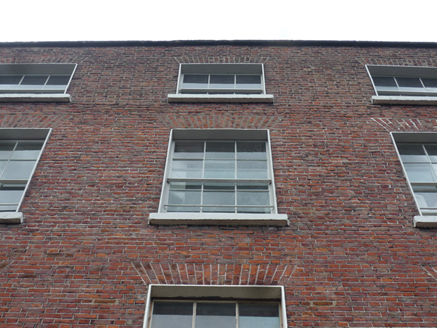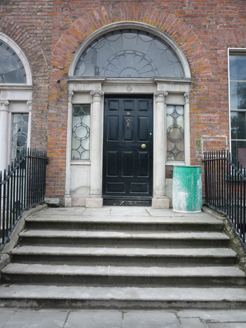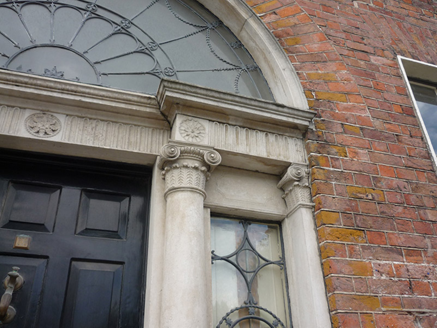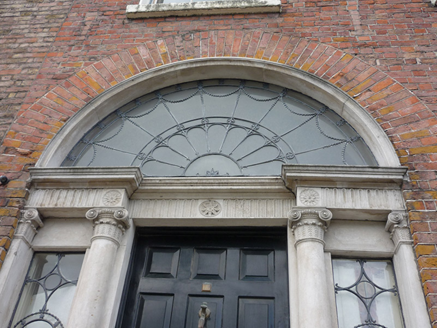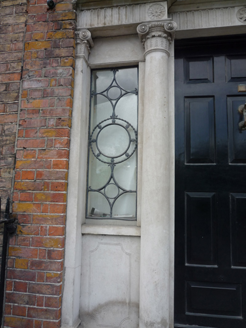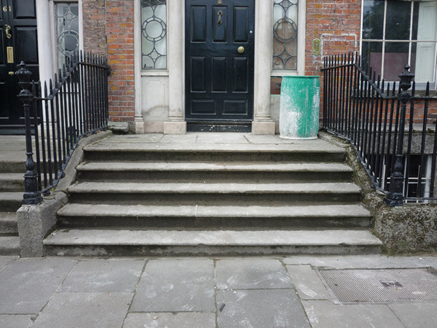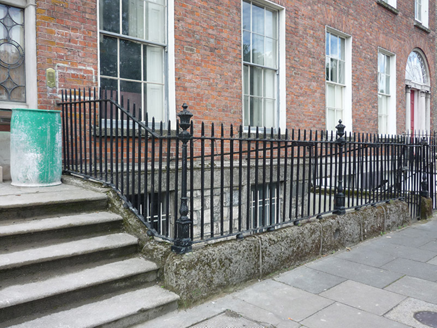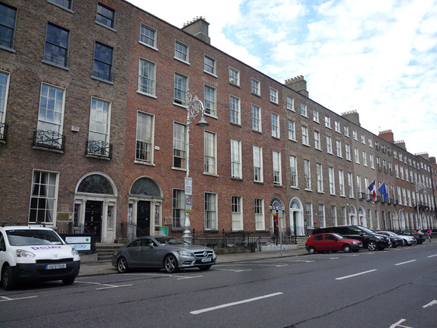Survey Data
Reg No
50100426
Rating
Regional
Categories of Special Interest
Architectural, Artistic
Original Use
House
In Use As
Office
Date
1785 - 1795
Coordinates
316680, 233434
Date Recorded
29/07/2016
Date Updated
--/--/--
Description
Attached three-bay four-storey former house over basement, built c. 1790 apparently as one in terrace of seventeen, having full-height bow to two bays of rear, third bay having six-bay two-storey return having three-bay link to north with single-bay further storey over. Now in use as offices. Pitched slate roof to front, hipped to east end, behind brick parapet with granite coping, and with two hipped roofs to rear perpendicular to street, larger over bow. Shouldered rendered chimneystacks to west end with clay pots. Return has brick walls, pitched slate roof to main block and flat roofs to remainder. Flemish bond red brick walls to front elevation on granite plinth course over rendered walls to basement; yellow brick walls to rear over rendered basement, having replacement red brick arches to top two floors. Square-headed window openings, diminishing in height to upper floors, with rendered reveals and painted granite sills; carved granite block-and-start surrounds to basement. Timber sliding sash windows, nine-over-six pane to first floor at front and to ground and first floors at rear, three-over-three pane to top floor front and rear, and six-over-six pane elsewhere. Wrought-iron grille to basement at front and wrought-iron balconettes to first floor at rear. Round-headed principal doorway with rendered linings, stepped fluted frieze and entablature, engaged Ionic columns with respond pilasters flanking leaded fanlights, elaborate batwing fanlight, cavetto-moulded architrave, and eleven-panel timber door with brass furniture. Granite platform with cast-iron boot-scrape and five bull's-nose granite steps. Wrought-iron railings enclosing basement area with decorative cast-iron posts on carved granite plinth. Replacement timber panelled door accesses basement interior below bridged platform. Cast-iron coal-hole covers set in granite flags to footpath. carparking to rear of house and recent building to rear part of plot.
Appraisal
An elegant Georgian house that forms part of the eighteenth-century square developed by the Fitzwilliam Estate. This building is greatly enhanced by its fine Ionic doorcase and presents an intact appearance to the front and rear. Casey (2005) notes that the interior has a fine vestibule at the first landing, a grisaille copy of the frieze from the Parthenon in Athens over the doorway between the first floor rooms, and that the windows to the return contain mid-seventeenth century Flemish and contemporary Dublin glass. The railings also provide visual and craft interest. The building and its intact setting details contribute significantly to the intact appearance of this internationally important architectural set-piece. The square is one of the best-preserved Georgian streetscapes in Ireland. The north, east and south sides are lined with terraced houses of eighteenth and early nineteenth-century date, while the west side is terminated by the garden front of Leinster House. The houses maintain a relatively uniform building height and design, attributed to standards promoted in Fitzwilliam's leases. Individuality was introduced through the design of doorcases, window ironwork and interior decorative schemes.
